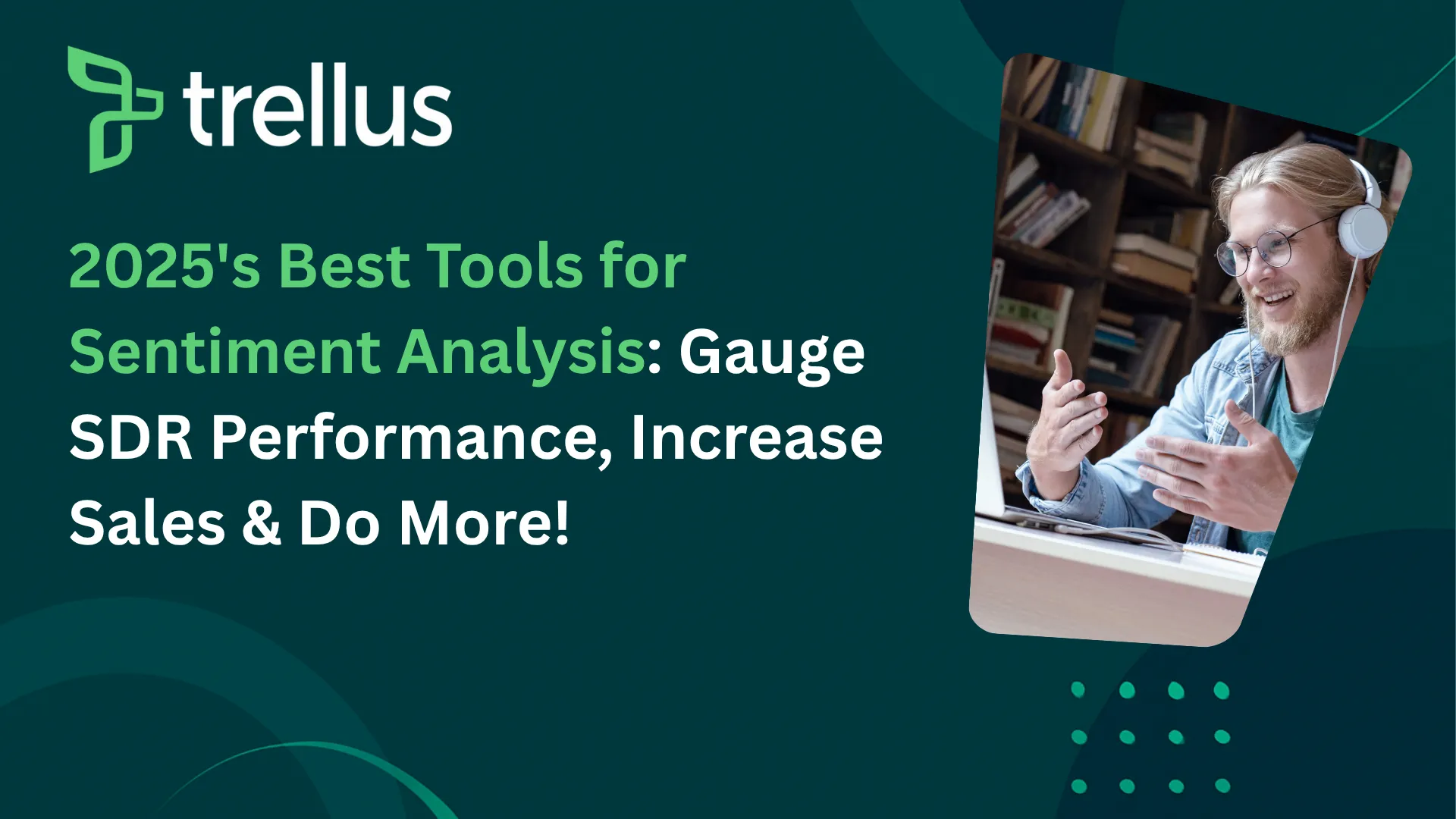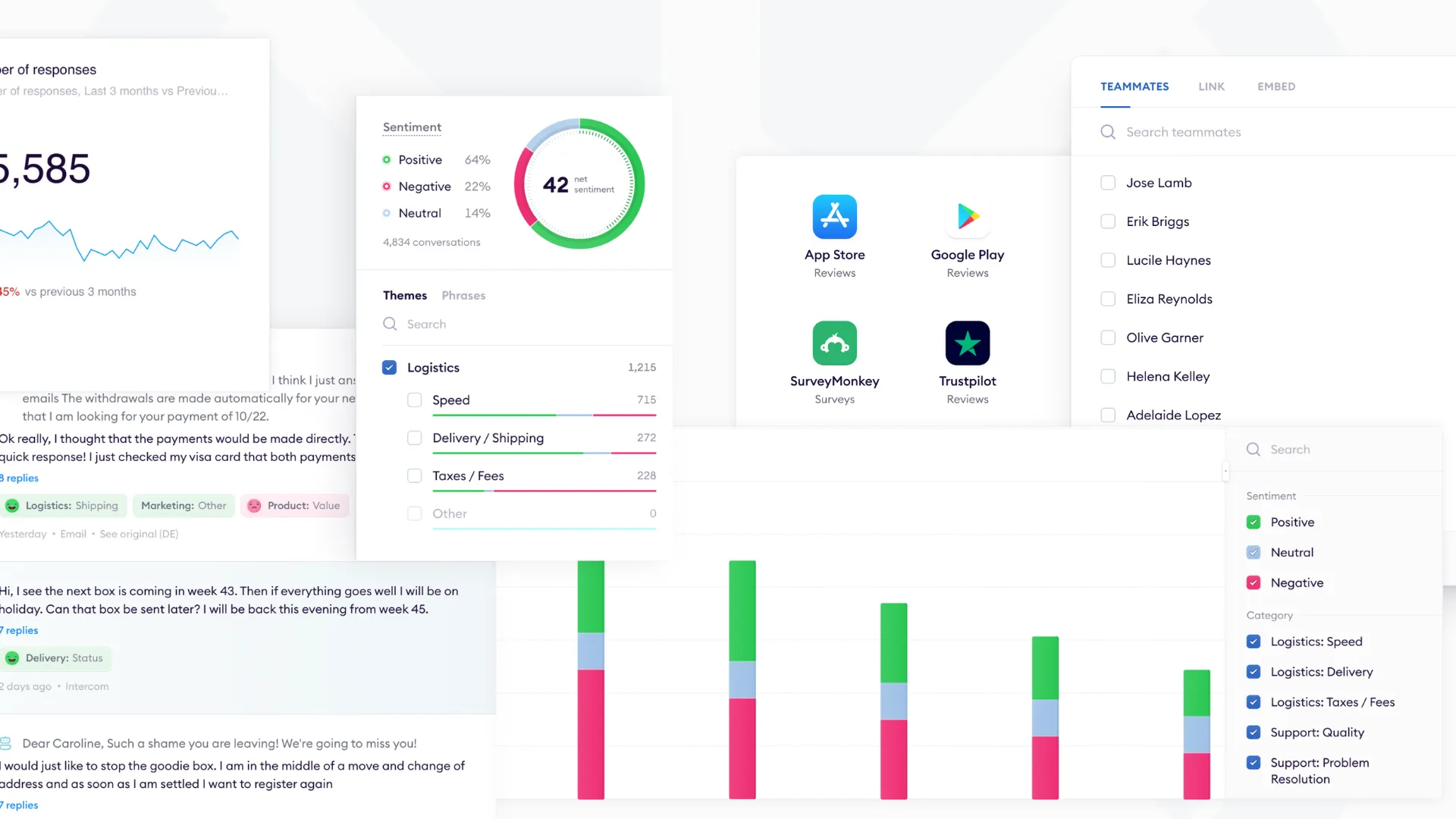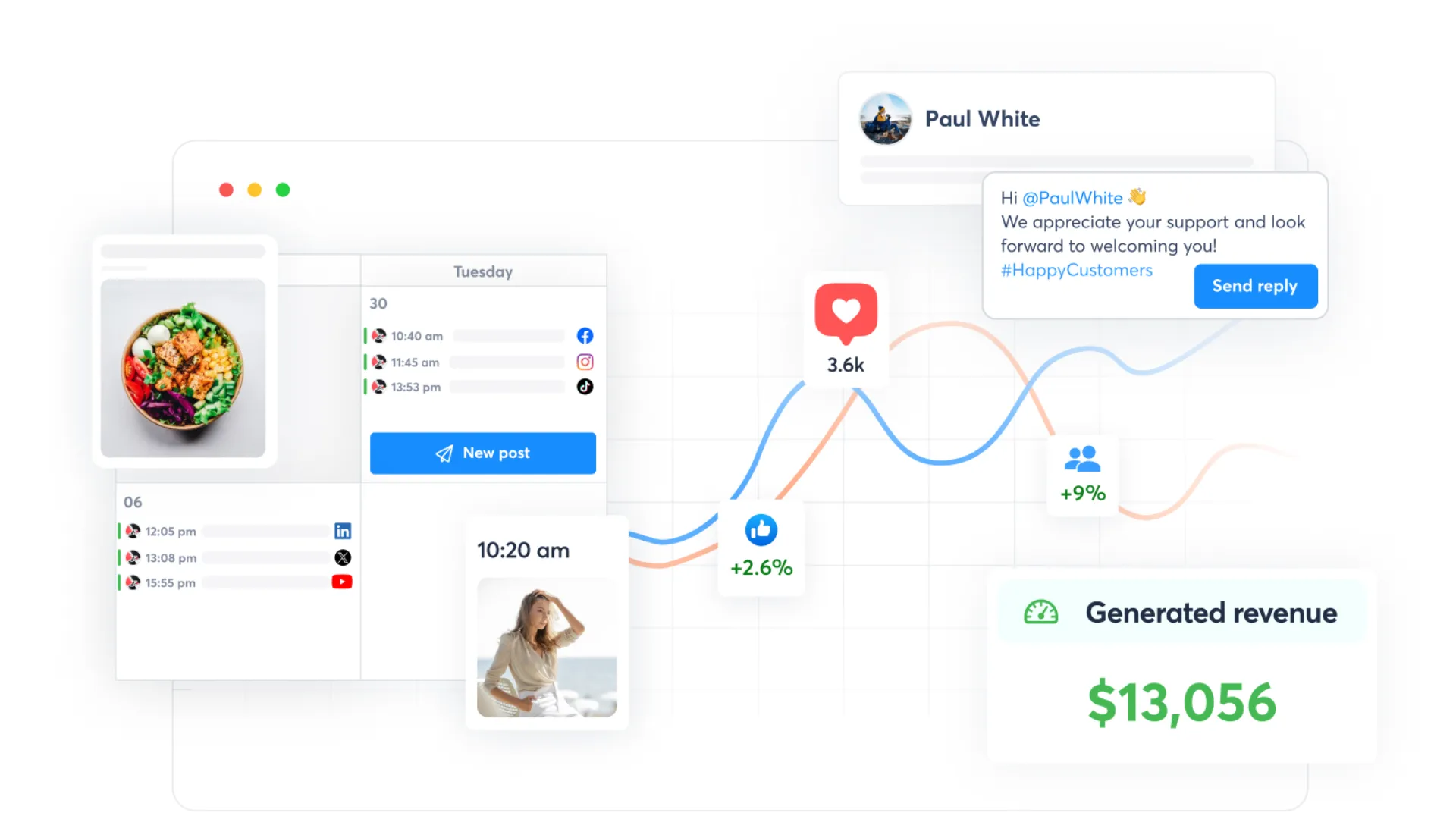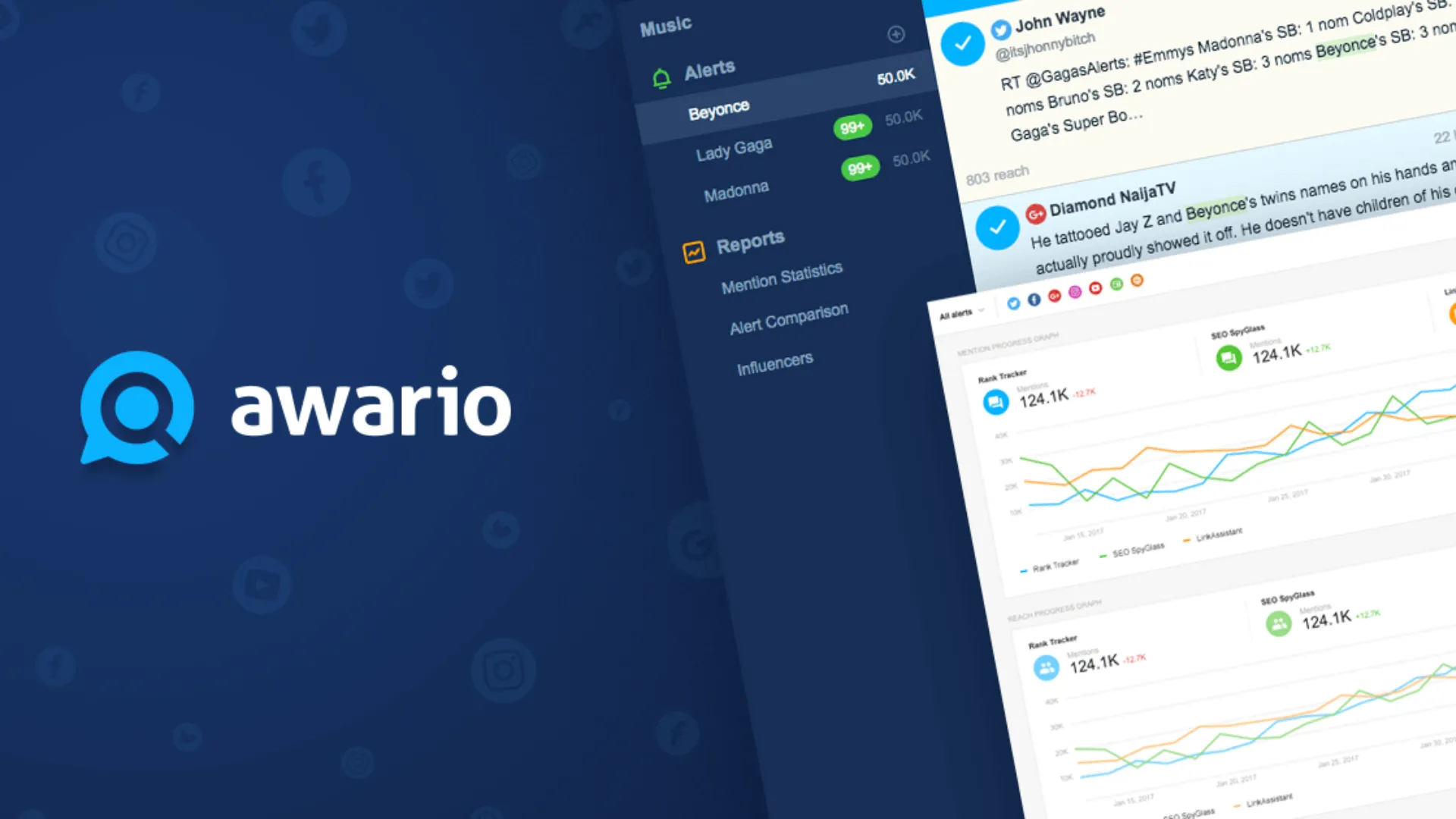
Our Top Picks


As a sales manager, we need you to go back to the last call placed between your SDR and a valued prospect.
The prospect may have said all the right words, “interesting,” “we’ll review internally,” “sounds good.” But the tone and phrasing tell another story. Were they curious? Hesitant? Frustrated? Excited?
This emotional layer is where sales magic (or disaster) often happens.
And when you’re running dozens of calls daily, spotting those subtle shifts in emotion manually isn’t realistic.
That’s where tools for sentiment analysis in sales calls step in.
They decode the emotional tone hidden in voice and text, helping sales leaders understand what’s really happening behind the words.
In essence, they act like an intelligent emotion detector, giving you real-time insight into how a prospect feels, not just what they say.
What Are Sentiment Analysis Tools?
A sentiment analysis tool is an AI-powered platform that reads, interprets, and scores emotions from human language. It looks at words, tone, rhythm, pacing, and phrasing to understand how someone feels during or after a conversation.
In sales call environments, this means analyzing call transcripts, live recordings, or chat conversations to identify emotional cues, from excitement and trust to frustration and hesitation.
These platforms rely on Natural Language Processing (NLP) and machine learning models that are trained on massive datasets of human communication. They don’t just keyword-match; they interpret the context. For example, they can tell the difference between:
- “That’s just great…” (sarcasm)
- “That’s just great!” (enthusiasm)
This nuance makes sentiment analysis techniques in sales calls incredibly powerful. They help sales teams understand not only the outcome of a conversation but also the emotional trajectory that led to it.
How Sentiment Analysis Techniques Work in Sales Calls
When applied to sales calls, sentiment analysis techniques follow a structured process designed to decode both linguistic and paralinguistic (voice tone, pace, pitch) elements.
Here’s how it typically works:
- Speech-to-Text Conversion:
The tool first converts the sales call audio into a text transcript using speech recognition. - Language Parsing:
NLP models break down each sentence into linguistic components, verbs, adjectives, and emotional keywords, while also detecting sarcasm, negation, or repetition patterns. - Contextual Emotion Detection:
Advanced models assess tone and phrasing to detect emotions such as confidence, confusion, hesitation, or excitement. - Polarity Scoring:
The system assigns each sentence or segment a sentiment score, positive, negative, or neutral, creating a map of emotional highs and lows throughout the conversation. - Insights Visualization:
Then again, we’ve got dashboards of different kinds to display aggregated sentiment trends across multiple calls. They are widely known for helping managers see how team tone impacts deal outcomes.
The most advanced tools even offer real-time coaching prompts, guiding reps to shift tone, pace, or empathy level during live calls, turning AI sentiment insights into instant behavioral adjustments.
Why Sentiment Analysis Matters in Modern Sales
Sales conversations are no longer just about scripts and closing lines. They’re about empathy, timing, and tone, human factors that heavily influence buying decisions.
Imagine being able to identify that your top rep doesn’t necessarily talk the most but consistently maintains a positive emotional sentiment score across calls. Or realizing that churn risk spikes when customers express a certain combination of “neutral” and “frustrated” tones early in a conversation.
This is why tools for sentiment analysis in sales calls have become mission-critical for data-driven sales organizations.
They help teams:
- Get the full emotional story: Understand what customers actually feel, not just what they say.
- Spot red flags early: Detect frustration or hesitation before it escalates into lost opportunities.
- Optimize team performance: Identify communication styles that correlate with higher close rates.
- Refine sales messaging: Adjust tone and language to match customer sentiment in real time.
When combined with conversational intelligence and call recording platforms, sentiment analytics doesn’t just evaluate your calls; it transforms them into a feedback engine that continuously refines sales performance.
Core Features of Tools for Sentiment Analysis in Sales Calls
Sales conversations are filled with emotional cues.
Naturally, there’s always a sense of the customer’s hesitation before answering; the tone shift when discussing pricing, or a subtle pause that signals uncertainty.
In such cases, the right type of sentiment analysis tool can capture all of these micro-signals and turn them into data you can act on.
Here are the core functionalities that separate a powerful, sales-ready sentiment analysis platform from basic text analysis software.
Emotion and Tone Detection
The foundation of every sentiment analysis system lies in its ability to detect tone and emotion from voice and text.
These tools interpret voice patterns, pitch, rhythm, and pacing, along with language choices to identify underlying emotional states such as frustration, optimism, curiosity, or disappointment.
In the context of sales calls, this allows teams to identify emotional peaks and dips throughout a conversation. For instance, you might find that prospects consistently show hesitation during the pricing section, suggesting the need to adjust your positioning.
Polarity Scoring and Sentiment Mapping
Polarity scoring classifies each phrase or statement as positive, negative, or neutral, giving sales managers a numeric or visual sentiment trend across entire calls.
When applied to dozens or hundreds of call recordings, this creates a heatmap of where sentiment shifts typically occur in your sales process.
It’s not just about measuring mood swings; it’s about linking those emotional patterns to outcomes. A high closing ratio might correlate with calls that sustain an overall positive sentiment curve, whereas neutral or negative dips may predict lost deals.
Text Classification and Intent Detection
Modern sentiment analysis tools use AI to automatically tag topics and detect intent within conversation transcripts.
For example, during a demo call, the software might tag phrases like “integration,” “pricing,” “support,” and “security”, and then analyze the associated sentiment with each.
If the customer’s tone grows more positive while discussing integrations but neutral when discussing pricing, that insight tells you exactly where to focus in follow-up communications.
Entity and Keyword Analysis
Entity recognition allows sentiment tools to pinpoint specific product names, competitors, or features mentioned in the conversation, and assess how customers feel about each.
So when a buyer says, “I liked your dashboard, but Salesforce’s analytics seem stronger,” the system understands both entities (“dashboard” and “Salesforce”) and their associated emotional polarity.
This helps teams assess brand perception in real-world contexts, not through surveys, but through raw conversation data.
Trend Detection and Segmentation
For larger teams, trend detection is where the real ROI kicks in.
Sentiment data can be segmented by rep, product line, customer type, or region. Over time, these insights highlight emotional patterns that correlate with outcomes, allowing leaders to refine playbooks, prioritize leads, or retrain reps on empathy-driven communication.
When integrated with a sales engagement platform or CRM, these insights can even trigger automated alerts when customer sentiment drops below a threshold, helping you intervene before relationships sour.
Multimodal and Multilingual Analysis
Global sales teams engage customers across markets and languages. That’s why the top sentiment analysis tools for 2025 go beyond English text.
They support multilingual analysis, recognizing emotional tone across dialects, and, in some cases, integrate the overall AI vision for analyzing video-based sales calls. This allows emotion detection not only from voice but also from facial expressions and visual cues.
How Sentiment Analysis Transforms Sales Team Performance
For years, sales teams have relied on intuition to gauge how a conversation went. Now, data can prove or disprove those instincts.
When sentiment analysis techniques for sales calls are applied consistently, they reveal the emotional DNA behind successful deals.
- Coaching with context: Instead of generic advice like “sound more confident,” managers can show a rep where the customer’s tone shifted during their call.
- Customer retention: Negative sentiment trends across renewal calls can predict churn before it happens.
- Product feedback: Frequent mentions of “confusion” or “difficulty” tied to a specific feature highlight usability issues before they reach public channels.
- Campaign intelligence: Campaign intelligence is more of a signal that’s analyzed in terms of how leads react emotionally to new messaging or promotions. That way, it’s easier for marketing teams to adapt their tone and targeting.
Essentially, sentiment analytics turns your sales call recordings into a continuous loop of feedback, refinement, and growth.
Best Sentiment Analysis Tools for Sales Calls in 2025
Now that the fundamentals are clear, let’s move to the most trusted, feature-rich tools for sentiment analysis in sales calls that help sales teams decode customer emotions, track call sentiment in real-time, and make smarter data-driven decisions.
1. Trellus - Overall No.1 Tool for Sentiment Analysis, Live Call Coaching, and AIO Outreach Experience

Best for: AI-Powered Real-Time Call Coaching and Sales Conversation Intelligence
Standout Coaching Feature: Adaptive AI Coaching Engine with speech, emotion, and intent detection
Trellus is one of the most advanced real time call coaching platforms emerging in 2025, combining conversation intelligence, behavioral analytics, and AI-driven coaching in one unified environment.
The program is built for modern sales teams that want instant insights during live calls, not hours or days later.
Where most traditional tools only analyze speech patterns or call summaries, the sentiment and call analysis software for sales teams goes deeper, interpreting intent, sentiment, and conversational flow in real time. This allows sales reps to receive coaching cues that feel as if a live sales mentor is sitting beside them during every customer interaction.
Key Features:
- Real-Time Conversational Coaching: Trellus uses an adaptive AI engine that listens to live conversations and provides micro-prompts directly within the call interface.
These cues might include reminders to slow down, reframe an objection, or ask an open-ended question; all without breaking the flow of conversation.
- Emotion and Sentiment Analysis: Beyond tone tracking, Trellus identifies emotional states and buyer intent in real time. It recognizes when engagement drops, when hesitation appears, or when a customer’s sentiment shifts, empowering reps to adjust their communication style on the spot.
- AI-Driven Practice Calls: SDR teams can learn at their own pace by setting up mock calls against AI bots with Trellus. Since managers don’t have time to manually train teams, it’s a great option for enabling self-empowerment through paced learning.
The best thing about AI bot calls is that these calls are based on previous real-life recorded calls placed between an SDR and any prospect in question.
Our intelligent conversational technology analyzes these calls and deploys AI agents that work as prospects. As a result, your teams can talk to these “prospects”, improve call conversational skills and have better comebacks to naturally occurring cold call objections.
- Seamless Integrations: Trellus integrates with major CRMs, dialers, and communication platforms, ensuring that all call data, transcripts, and insights sync automatically into your workflow.
Why It’s The Best Option For Your Sales Call Business:
In a nutshell, the program represents the evolution of AI sales coaching, moving from simple analysis to true conversation augmentation.
Its blend of emotion detection, intelligent prompting, and contextual learning positions it as one of the most innovative tools for real-time call coaching and performance enablement today.
2. InMoment (Lexalytics)
.webp)
InMoment is a customer experience platform powered by Lexalytics, a sophisticated NLP engine that processes text, speech, and survey data to reveal underlying emotional intent.
For sales teams, this means extracting sentiment insights directly from call transcripts and customer feedback to see where conversations spark excitement or frustration.
Key Strengths:
- Supports more than 30 languages and dialects, ideal for global sales operations.
- Detects emotions such as trust, joy, or dissatisfaction, not just positive or negative sentiment.
- Converts complex feedback into easy-to-read visual sentiment dashboards.
Sales Call Use Case:
InMoment can analyze entire sales conversations to highlight specific emotional moments, such as when the customer’s tone turns hesitant after pricing is mentioned. This makes post-call coaching more data-driven and personalized.
3. Medallia

Medallia’s platform is built to listen, not metaphorically, but literally. It captures and analyzes text, speech, and even video interactions to uncover sentiment patterns across the entire customer journey.
It’s used widely across B2B organizations to measure how customers feel during every interaction, including sales calls, emails, and follow-ups.
Key Strengths:
- Processes real-time feedback from multiple sources (voice, social, chat, email).
- AI models detect sentiment in both text and tone, including pauses and pacing.
- Integrates easily with CRM systems for tracking sentiment trends per account.
Sales Call Use Case:
For sales managers, Medallia acts like an emotional radar. It helps identify when call sentiment starts declining mid-conversation, enabling early intervention and improving close rates.
4. Qualtrics (Clarabridge)
.webp)
Qualtrics, with its Clarabridge integration, is another heavyweight in the experience management arena. Its Text iQ engine reads unstructured data from surveys, calls, and chats to uncover emotional trends and categorize customer reactions.
Key Strengths:
- Assigns sentiment scores across call transcripts.
- Auto-classifies recurring themes, revealing top emotional triggers.
- Supports multilingual sentiment analysis for international teams.
Sales Call Use Case:
Qualtrics is particularly effective for large organizations running multiple sales regions. It helps uncover which types of conversations are producing positive emotional outcomes, and which ones are eroding trust or excitement.
5. Chattermill

Chattermill is built to unify all your customer feedback into one intelligent dashboard. It applies AI-driven sentiment analysis to voice calls, chat logs, reviews, and surveys, creating a holistic view of how customers emotionally experience your brand.
For sales organizations, this means one thing: complete visibility into how customers feel at every touchpoint, not just what they say.
Key Strengths:
- Combines call data, support feedback, and product reviews to create a unified sentiment map.
- Automatically detects recurring themes, emotions, and satisfaction levels across interactions.
- Integrates seamlessly with CRM systems and tools like Zendesk, Slack, and Salesforce.
Sales Call Use Case:
Chattermill makes it easy to pinpoint the emotional triggers behind conversion patterns. For instance, it can show that positive sentiment spikes when prospects mention ease of onboarding, giving your sales team a powerful narrative to lean on in future pitches.
6. Brandwatch

Brandwatch is one of the most recognized names in digital sentiment tracking, particularly for social media and brand monitoring.
While its roots are in marketing analytics, its sentiment detection engine is now widely used in sales operations to gauge real-time customer mood and intent.
Key Strengths:
- Monitors brand mentions across multiple platforms , including social media and forums.
- Classifies sentiment as positive, negative, or neutral and tracks it over time.
- Offers visual dashboards showing shifts in customer perception after key announcements or updates.
Sales Call Use Case:
Sales teams can use Brandwatch to track sentiment around product launches or industry conversations, allowing them to align call messaging with current public perception.
When the sentiment around your product spikes positively, it’s the perfect time to reach out to warm leads.
7. Buffer

Buffer is often known for its simplicity in social media scheduling, but its analytics suite now includes basic sentiment classification for customer engagement. It’s a lightweight yet efficient option for small sales or marketing teams who want to track tone in customer replies and mentions.
Key Strengths:
- Automatically tags engagement as positive, question-based, or order-related.
- Simplifies brand conversation management through sentiment-based filtering.
- Provides clean analytics dashboards ideal for smaller teams.
Sales Call Use Case:
While not built for deep audio sentiment analysis, Buffer’s tagging capabilities can still complement your outreach strategy.
8. Agorapulse

Agorapulse is another social media management platform that offers straightforward sentiment tagging capabilities. Its Inbox Assistant feature can automatically categorize customer messages as positive or negative based on specific keywords.
Key Strengths:
- Simple automated sentiment labeling for inbound messages.
- Keyword-based filtering that identifies positive or negative intent.
- Smooth integration with existing social engagement workflows.
Sales Call Use Case:
For sales development teams operating on social platforms like LinkedIn or Twitter, Agorapulse acts as an early-warning system. It highlights negative sentiment from potential buyers or existing customers, helping your team adjust tone or timing before re-engaging.
9. Awario

Awario specializes in brand monitoring and reputation management , tracking every mention of your company or product across the web and analyzing sentiment in each mention.
Its sentiment engine classifies discussions as positive, neutral, or negative while showing emotional trends over time.
Key Strengths:
- Tracks conversations from social networks, blogs, news, and forums in real time.
- Provides competitor sentiment comparison reports.
- Detects potential PR crises early through negative sentiment spikes.
Sales Call Use Case:
Sales leaders can use Awario to identify emotional trends before jumping into customer calls. If a product update is causing negative buzz online, the tool prepares your reps with context so they can address concerns proactively during calls.
10. Aylien (Quantexa)
.webp)
Aylien takes sentiment analysis beyond traditional social and call data, focusing instead on news intelligence and public perception tracking. It’s particularly valuable for enterprise-level sales teams that need to understand how their brand or market segment is emotionally represented in the media.
Key Strengths:
- Processes thousands of news sources and industry articles daily.
- Performs entity-level sentiment analysis, pinpointing emotional tone toward specific people, companies, or topics within an article.
- Helps identify early indicators of reputation risks or emerging opportunities.
Sales Call Use Case:
Aylien’s insights equip enterprise sales reps with emotional context before engaging major prospects.
For example, if the media sentiment toward a competitor turns negative, your reps can confidently position your product as the stable alternative during calls.


.jpeg)




